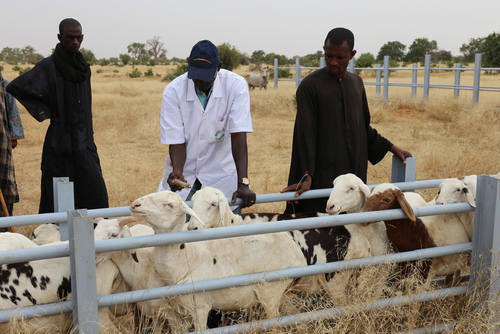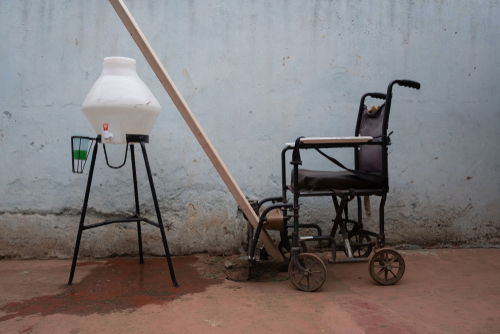March 07, 2023

A documentary on the complexities of combatting AMR globally.
In a documentary titled “Silent Pandemic: The Global Fight Against Antimicrobial Resistance” OHT’s Ramanan Laxminarayan warned about the dangers of limited antibiotic access, which causes more fatalities than antimicrobial resistance. The documentary highlights gaps in antibiotic research and development while emphasizing current successes in the fight against AMR, including antibiotic stewardship programs in the US. [The Lancet Respiratory Medicine]
Antibiotic prescribing among adults increased with COVID-19 cases in the US.
One Health Trust researchers assessed the impact of the COVID-19 pandemic and related infection prevention measures on trends in antibiotic prescribing in the United States. Each one percent increase in county-level monthly COVID-19 cases was associated with a 0.009 percent increase in prescriptions dispensed per 100,000 people. Outpatient antibiotic prescriptions were positively correlated with monthly COVID-19 cases; however, this association was negative for children, likely due to school closures and decreased transmission of other upper respiratory infections. The primary predictor of county-level prescribing trends was previous years’ prescribing rates, highlighting the role of behavioral norms in inappropriate antibiotic prescribing. [Open Forum Infectious Diseases]
A new interactive map shows the CDC’s investments in projects against AMR.
The United States Center for Disease Control and Prevention (US CDC) has created the Antimicrobial Resistance Investment Map to highlight the CDC’s activities and projects to fight antimicrobial resistance (AMR). By documenting its financial investment in laboratory research, surveillance, and innovation, the agency hopes to support country-wide efforts to tackle AMR. The map also includes CDC public health activities funded to help prevent COVID-19 transmission, such as infection prevention and control measures, that have been leveraged in the fight against AMR. [CDC]
ChatGPT shows potential for providing antimicrobial advice.
Researchers evaluated the effectiveness of ChatGPT, an emerging generative AI model, in providing antimicrobial advice in eight hypothetical scenarios. ChatGPT synthesized the clinical importance of symptoms and other factors when explicitly stated but missed important points when given more complex prompts. The model used correct spelling and coherent language. However, its advice sometimes changed upon repeated prompting. Its recommended antimicrobial regimens were mostly accurate, including generic course lengths, and antimicrobial stewardship was included in its responses. The researchers observed ChatGPT’s pitfalls regarding situational awareness, but the model was promising in delivering limited antimicrobial advice. [The Lancet]
Armed conflict contributes to the transmission of resistant pathogens.
With rates of antimicrobial resistance (AMR) rising in the Middle East, experts are investigating the direct and indirect roles of war and conflict as drivers of AMR. Iraq experienced a series of conflicts since the 1980s, including the Iraq-Iran war (1980-1988), which coincided with the emergence of the first resistant pathogens in the country. During the US occupation of Iraq starting in 2003, Iraq faced severe shortages of essential medicines, equipment, and healthcare personnel. Broad-spectrum antibiotics were used widely, resulting in a spike in the transmission of resistant pathogens, particularly A. baumannii. In 2014, ISIS’ armed conflict with Iraq led to further deterioration of the country’s infrastructure, which augmented the burden of AMR. [BMJ]
Sepsis screening tools must be validated in new patient populations to optimize performance.
Researchers assessed the performance of commonly used sepsis screening tools in two low- and middle-income countries, Cambodia and Ghana, and one high-income country, the United States. The quick Sequential Organ Failure Assessment and Universal Vital Assessment tools performed well at predicting 28-day mortality at all three sites. While the best performance was observed in Ghana, no improved prediction score was seen in Cambodia. Given the variations in tool performance among the three sites, the study findings highlight the importance of validating sepsis screening tools in new patient populations to adjust for the effects of diversity in settings and facility-specific sepsis treatment regimens. [BMJ Open]
No increase in the incidence of candidemia in Calgary between 2010 and 2018.
A new study estimated the burden of candidemia among adults in Calgary, Canada between 2010 and 2018. The overall incidence of candidemia was 3.8 per 100,000 individuals per year. The most common species identified was Candida albicans which accounted for more than half of all candidemia cases. The researchers did not observe any development of resistance among C. albicans and the species remains susceptible to fluconazole. While the incidence of candidemia in Calgary varied per year, it did not increase between the start and end of the study period. [BMC Infectious Diseases]
Robust vaccine manufacturing in LMICs is a must for vaccine equity.
Vaccine inequity between the Global North and the Global South has taken a toll on low-and middle-income countries (LMICs), where over three-fourths of the world’s population lives. The COVID-19 fatality rate was four times greater in LMICs than in their higher income counterparts, and many experts point to a lack of access to vaccines as a major contributing factor to this disparity. Most vaccines are manufactured in high-income countries and despite efforts to share these products with LMICs, these are typically insufficient to meet demands. Possible solutions to this issue include collaboration between LMICs to build on existing frameworks and government funding to increase in-country vaccine manufacturing capacity. [The Lancet Regional Health]
Longstanding racial inequities pervade maternal and reproductive health.
Despite recent advances in women’s health and reproductive medicine, racial inequity remains a roadblock to achieving true equity in healthcare for all women. For example, in the United States, Black, Latina, Indian, and Alaskan Native women disproportionately experience preterm birth compared to white women. The US also has a long history of racial inequities regarding pregnancy and childbirth: enslaved Black women were forced to reproduce and sometimes subjected to experimental medicine at the hands of physicians against their will. The recent US Supreme Court ruling allowing for states to further restrict or ban abortion access is predicted to primarily harm and endanger the lives of Black and Latina women due to structural racial inequities. Healthcare systems must be reevaluated and restructured to address failures to ensure positive clinical outcomes for all women. [eClinicalMedicine]
Image from Canva.











